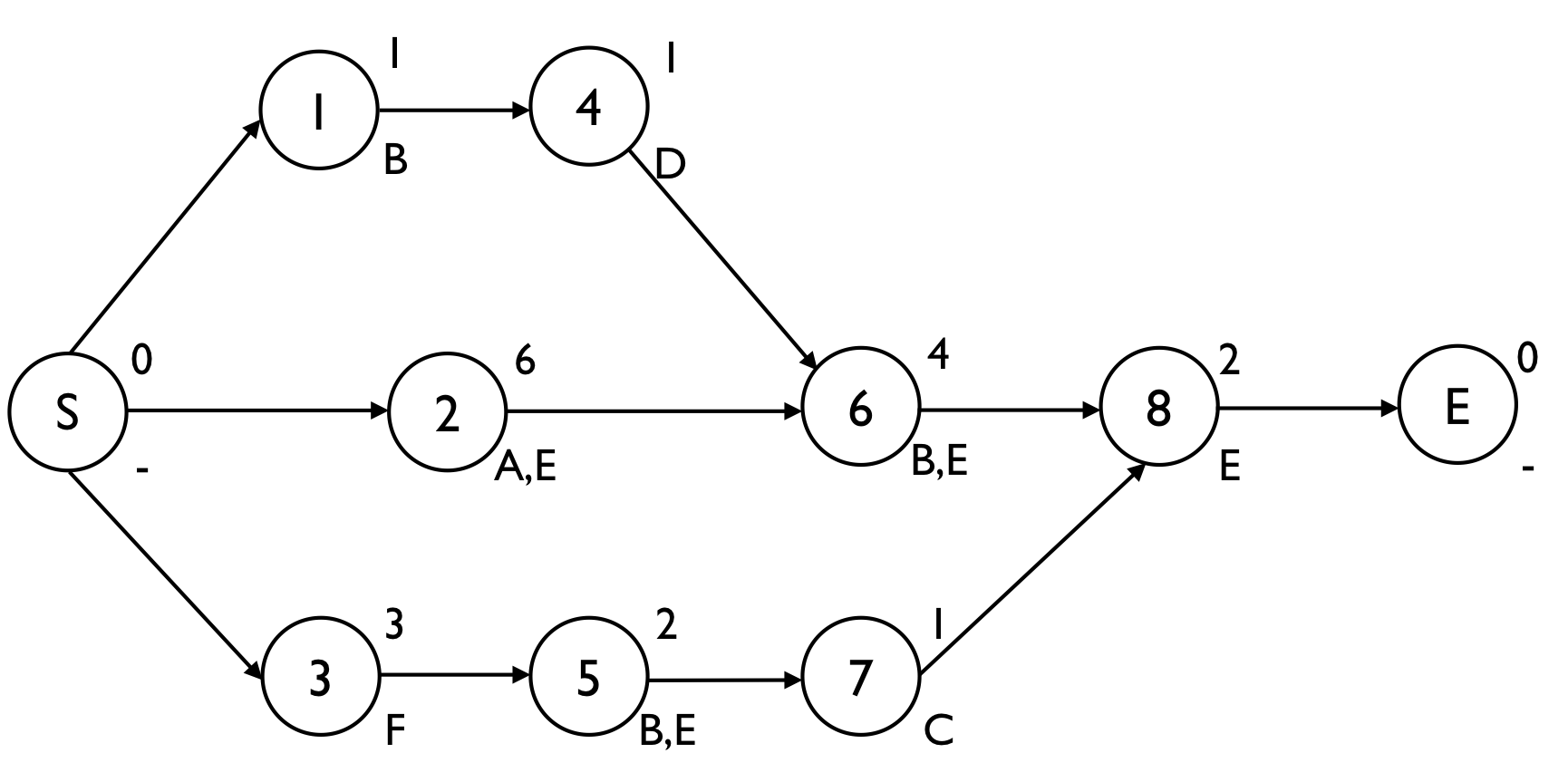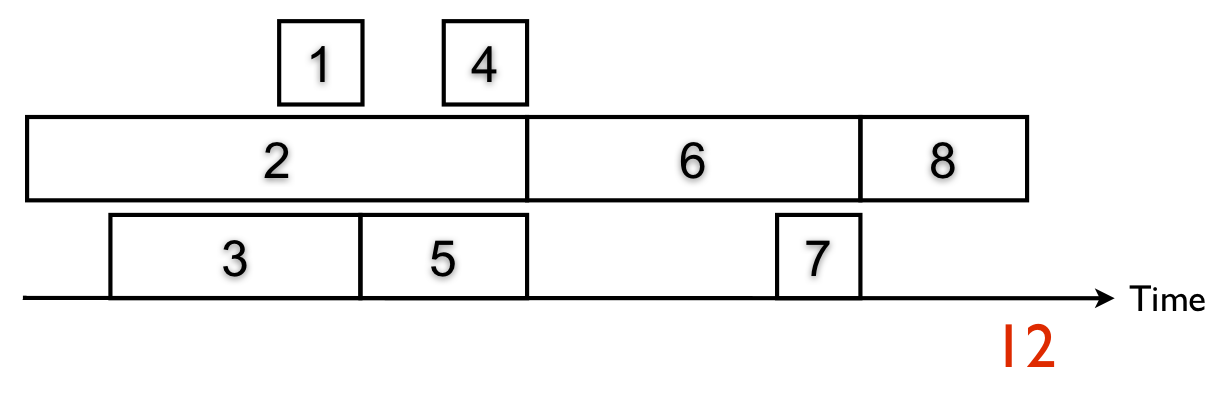Critical Chain/Buffer Management: (Dis-)advantages of scheduling projects as-late-as-possible
Submitted by Mario Vanhoucke on Tue, 01/17/2012 - 13:25




During the construction of a project baseline schedule in the Critical Chain/Buffer Management (CC/BM) approach, activities are scheduled as-late-as-possible towards the predefined project deadline. In this article, the contrast between the traditional resource-constrained project scheduling approach and the CC/BM scheduling approach is discussed along the following dimensions:
- Traditional resource constrained scheduling: Earliest start schedule based on risk-free activity duration estimates
- Critical chain scheduling: Latest start schedule based on aggressive activity duration estimates
Traditional resource constrained scheduling
In the PERT/CPM scheduling approach, renewable resources are ignored and the critical path can be easily detected by scheduling all activities as-soon-as-possible, leading to an earliest start schedule (ESS) (see ”Scheduling projects: How to determine the critical path using activity slack calculations?”). When renewable resources are taken into account, their limited availability might cause resource conflicts which have to be resolved (see ”The critical path or the critical chain?: The difference caused by resources”). This can be done by working forwards from the project start date, gradually resolving resource conflicts using priority rule based scheduling techniques or other scheduling techniques (see ”Optimizing regular scheduling objectives: Priority rule based scheduling”).
Figure 1 displays a project network with 8 activities. The numbers above each node are used to refer to the activity duration estimate while the label below the node refers to a renewable resource that is required to perform the activity. The renewable resources A, B, C, D and F have an availability of one, while the renewable resource E availability is restricted to two units.

?Figure 1. Project network data with normal activity durations
A resource feasible schedule of the project network of figure 1 is easy to construct, since a simple earliest start schedule shows no resource conflict, and hence, the critical path 2 - 6 - 8 is equal to the critical chain. However, it is shown in other articles that the construction of a resource feasible schedule is often more complex and the critical chain is often different from the critical path, and depends on the scheduling objective (see ”Resource constrained project scheduling: What is my scheduling objective?”). The resource feasible earliest start schedule is displayed in figure 2.

?Figure 2. A resource feasible earliest start schedule (CC = 2 - 6 - 8) of the project in figure 1
Critical chain scheduling
The CC/BM scheduling approach differs from the traditional resource-constrained scheduling approach in the use of aggressive time estimates and the construction of latest start schedules (LSS). In ”Aggressive activity time estimates: protecting against activity delays”, it has been shown that the use of aggressive time estimates is proposed to avoid the protection of the individual activities of the project. Instead, the risk-free estimates should be replaced by more risky estimates. In this article, it is assumed that the aggressive time estimates are equal to two thirds of their risk-free estimates (rounded down in case of fractional durations). This results in the project network displayed in figure 3.

?Figure 3. Project network data with aggressive activity durations
In the CC/BM approach, schedules are constructed by putting activities as-late-as-possible by working backwards from the project deadline and gradually resolving resource conflicts. This results in a resource feasible latest start schedule displayed in figure 4. Activity 5 has been pushed before activity 6 since it cannot be scheduled in parallel with activity 6 (due to their common use of resource B). Likewise, activity 1 has been pushed before activity 5 due to the resource conflict for resource B between activities 1 and 5.

?Figure 4. A resource feasible latest start schedule (CC = 2 - 6 - 8) of the project of figure 3
The construction of a resource feasible latest start schedule has a number of advantages in comparison with the earliest start scheduling approach, as follows:
- Latest start schedules tend to minimize the total work-in-progress. In this respect, it can be said that the construction of a LSS creates a more leveled resource workload than an ESS. More information on resource leveling can be found in ”What is my scheduling objective? Leveling the use of resources”.
- Latest start schedules automatically delay important cash outflows. Consequently, the construction of a LSS contributes to the maximization of the net present value of a project, as discussed in ”What is my scheduling objective? Maximizing the net present value”.
- Latest start schedules often lead to less rework. Indeed, delaying activities towards the project end postpones a portion of the uncertainty and hence many activities can be performed when the uncertain information is already available.
However, despite these advantages, the construction of a latest start schedule has one major disadvantage which might endanger the project deadline. Since all activities are scheduled as-late-as-possible, none of the activities have a positive slack value and hence all activities are critical. This disadvantage, in combination with the use of aggressive time estimates (see ”Aggressive activity time estimates: protecting against activity delays”), might jeopardize the project deadline and will probably lead to project deadline violations. However, the CC/BM approach will add buffers to the latest start schedule to protect the project deadline against the aforementioned threat. The schedule of figure 3 will be used to construct a buffered schedule for which more general information is given in ”Critical Chain/Buffer Management: Protecting the schedule against project delays”.
© OR-AS. PM Knowledge Center is made by OR-AS bvba | Contact us at info@or-as.be | Visit us at www.or-as.be | Follow us at @ORASTalks


